Adjusting to Working Out with a Mask
Posted by Jon Zbacnik on February 26, 2021
Mask usage has become a part of our everyday life. In order to keep workouts safe and effective, I have needed to adjust my own workouts and those of my personal training clients. Initially while exercising with a mask, you may feel that it is a hindrance to your workout. However, with a few minor tweaks, you can become acclimated to exercising with a mask and still enjoy a great workout. Below are some strategies that I have used to adjust to exercising while wearing a mask.
Adjusting Strength Training
For strength training, I will increase the rest time between sets and/or adjust the resistance of the exercise as needed. For example, on a superset of chest press and rows, I may lower the resistance of both exercises or increase the rest time between sets, or both.
Adjusting Cardio
For cardiovascular exercise, I will change the intensity of my efforts as I monitor my heart rate level. While heart rates will be different for everyone, I find that the rate of perceived exertion (RPE) is a good way to get a general feel for how intense the workout is for you.
- For moderate intensity, your breathing will be faster than at rest, but you will not be out of breath. Using the talk test, you should be able to carry on a conversation, but not be able to sing a song.
- For vigorous intensity, your breathing will be rapid, and by using the talk test you will not be able to say more than a few words at a time without pausing for a breath.
Initially, you may want to stay at a moderate intensity level as you may be prone to overexert more quickly with a mask. As you acclimate to exercising with a mask, you may choose to increase your intensity.
Here are a few tips excerpted from acefitness.org that will make wearing a mask while exercising more effective for you:
- Make sure your mask is big enough to cover your nose and face for proper protection.
- The mask should feel comfortable and snug around your cheeks and nose. Try not to fidget with the mask while you are exercising.
- If the mask restricts your breathing prior to exercise, it will not be good to wear during a workout.
- Wash your hands prior to putting on your mask. Soap and water are fine or use an alcohol-based hand rub.
- Make sure you do not touch your eyes, nose or mouth when removing your mask. Wash your hands after taking off your mask.
- It is best to remove your mask by the ear loops because the front of the mask is where germs will collect.
- A great advantage of a cloth mask is that it can be washed. Exercise enthusiasts who exercise regularly are encouraged to have a few masks so there is a clean, dry mask ready for each workout. Any laundry detergent will be fine for washing cloth face masks.
- When you talk, keep your mask over your nose and mouth. Do not pull it down as this defeats the purpose of blocking respiratory droplets from being released in the air.
- If you tend to sweat a lot when you work out (indoors or outdoors), perhaps bring a second mask with you and replace when it becomes damp. It is best to replace a damp mask (from workout sweat or outdoor humidity).
- For people who wear glasses, sometimes they fog up if too much air is released near the nose of the face mask. Readjust the mask to be snug over the nose. Furthermore, it has been shown that washing glasses with soapy water, without rinsing, and letting them dry prior to wearing a face mask reduces fogging. Alas, folding a tissue and placing underneath your glasses may absorb any escaping moisture from your breath.
- With children, find a cloth mask that fits a child’s face, comfortable but snug, and follow all of the same safety instructions above. Do not put masks on young children under the age of two.
These strategies will help you stay safe while adjusting to exercise with a mask. By starting at a lower intensity than you are used to, you will still get a good workout as you acclimate. Over time you should be able to increase your workout intensity. While those with underlying cardiovascular or respiratory conditions should be cautious when starting an exercise routine while wearing a mask, most people will be able to build the endurance to perform their regular workouts.
Sources:
Exercising with a Face Covering: Safety Do’s and Don’ts (acefitness.org)

Jon Zbacnik
Jon Zbacnik ACE Certified Personal Trainer has a degree in Health and Exercise Science from Concordia College. He enjoys spending time with his wife, exercising, doing outdoor activities such as rock climbing and hunting, and playing all sports - especially pick-up basketball at the RAC!
Contact Jon Zbacnik



